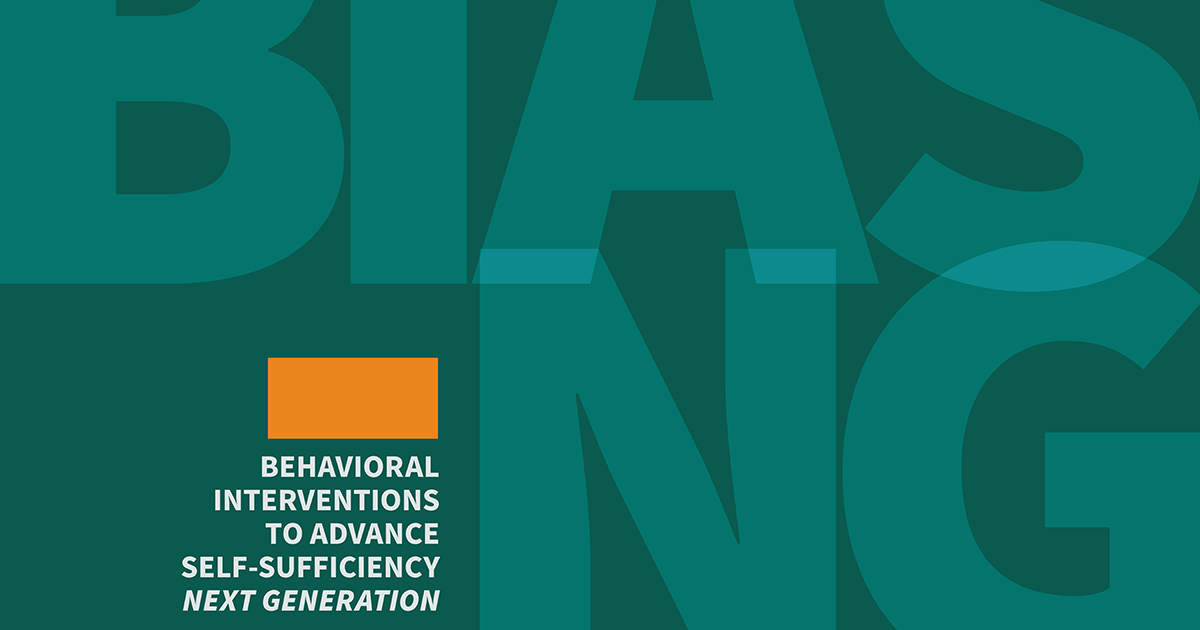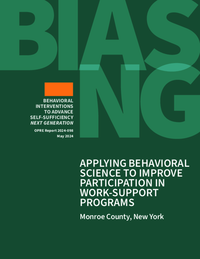Applying Behavioral Science to Improve Participation in Work-Support Programs
Monroe County, New York

The Behavioral Interventions to Advance Self-Sufficiency-Next Generation (BIAS-NG) project is supported by the Office of Planning, Research, and Evaluation within the Administration for Children and Families at the U.S. Department of Health and Human Services. BIAS-NG aims to make human services programs work better for the people receiving services by reshaping program processes using lessons from behavioral science, an interdisciplinary field that incorporates psychology, economics, and other social sciences to provide insight into how people process information, make decisions, and take action.
In Monroe County, New York, the BIAS-NG team, led by MDRC, worked with county staff members to design and test two interventions that aimed to increase attendance at required meetings and activities in the Temporary Assistance for Needy Families (TANF) program and New York State’s Safety Net program. These programs work in tandem to provide temporary cash assistance to qualifying individuals who have very low incomes.
While investigating patterns of engagement in these programs, the BIAS-NG team found that many participants did not attend some activities: Employment Assessment meetings, Internship Orientations, or work-based internships. Program rules require participants to attend these activities to continue receiving assistance. By observing program activities, interviewing program staff members and clients, and reviewing program documents, the team identified several behavioral bottlenecks that might contribute to these engagement challenges (that is, practices and procedures that might be reducing participants’ willingness or ability to engage in program activities). For example, the team found that the outreach letters for the Employment Assessment and the Internship Orientation were dense and focused on the consequences of not attending rather than the benefits of attending. Clients were only given one outreach letter per appointment, which placed the burden of planning to attend and following through solely on them. The team also found that aspects of the Internship Orientation might have created the expectation that it was not necessary for clients to pay attention to or participate in the orientation.
The BIAS-NG team and county staff members designed two interventions to address the behavioral bottlenecks. The first intervention redesigned the meeting outreach letters and added additional forms of outreach, including a reminder magnet and text messages. The second intervention redesigned the interaction between the participants attending the Internship Orientation and the staff members delivering the presentation.
Findings from a randomized controlled trial showed that participants who received the new outreach were 5 percentage points more likely than those who received the standard outreach to attend their Employment Assessment meetings on the initially scheduled dates. However, participants who received the new outreach were not more likely to attend an Employment Assessment meeting overall, nor did they attend the meeting faster on average than those who received the standard outreach. The difference only relates to attendance at that initially scheduled Employment Assessment, in part because clients who did not attend that initial meeting were rescheduled for a later one. The story is slightly more straightforward for the next required meeting, the Internship Orientation. For that meeting, 5 percentage points more attended of those who received the new outreach relative to those who received the standard outreach.
Findings from a second randomized controlled trial showed that those who attended the redesigned orientation were almost 4 percentage points more likely to participate in their assigned internship within one week than those who attended the standard orientation.
Document Details
Clinton, Rebecca Schwartz, Jared Smith, and Peter Baird. 2024. Applying Behavioral Science to Improve Participation in Work-Support Programs: Monroe County, New York. OPRE Report 2024-098. Washington, DC: Office of Planning, Research, and Evaluation, Administration for Children and Families, U.S. Department of Health and Human Services.






